A few days ago I got back from my first winter backpacking experience on the Ice Age National Scenic Trail in Wisconsin. My friend, Lisa, reached out with a couple different options and we landed on the Underdown Segment. Lisa is a Thousand-Miler Wannabe - i.e., she’s hiking the entire 1,200 miles of the Ice Age Trail in sections. We got out just after a big snowstorm, so the trail was untouched, and at many times, it felt like walking in a snowglobe. I was thankful for the four other women who wanted to brave the cold and get outside. This activity isn’t one you dive into without some research, so I thought it would be nice to share about the planning that took place before we hit the trail!
What I Packed
First things, first, the gear. The thing that keeps a gal warm on a cold winter night. Tempuratures dipped below 15 degrees, so it was really important to know what to bring to … stay alive … stay “comfortable” … get some sleep? Wisconsin winters are no joke! I had done a night or two tent camping in the winter, in the UP, with my husband and dog, but this was my first time doing it without them. Their body heat really came in clutch the first couple times we tried and I knew I wouldn’t have it this time around. That makes a huge difference. So, let’s talk about my sleep system.
My goal was to use what I have. I do my fair share of backpacking during the seasons without snow, so that really helped. I dug into my gear collection, and this is what I came up with! This expert advice column from REI really helped me understand what I might need.
Winter Backpacking Sleep System
REI Co-op Quarter Dome SL 1-Person, 3 Season Tent
2 Enlightened Equipment Quilts (doubled up, comfort rating of -10 degrees)
Revelation 10 degree quilt
Revelation 50 degree quilt
2 Sleeping Pads (doubled up, R-Value of 6.2)
Thermarest NeoAir XLite Inflatable Pad (R-Value of 4.2)
Nemo Switchback Closed Cell Foam Pad (R-Value of 2)
I was a little nervous about using my 3 season tent, but it worked out okay! I added a tarp underneath the tent footprint as an extra layer to stay dry. Another thing that had me worried was using quilts in the winter instead of a mummy style sleeping bag. I always struggle with cold drafts. I toss and turn and sleep on my side, so I’m starting to consider transitioning back to a traditional sleeping bag. But, this is what I had!
Other Cold Weather Sleeping Essentials
Inflatable Camp Pillow (something cheap I got on Amazon)
Cold Weather Clothing Layers
Smartwool Thermal Baselayer Top
Smartwool Thermal Baselayer Bottoms
Thick, roomy pair of wool socks from Wigwam
Eddie Bauer Fleece Lined Pants
Outdoor Research Microgrid Fleece Pullover
Fluffy trapper-style hat
Puffy Jacket
Handwarmers
Petzl Bindi Headlamp (it gets dark very early in December, light is important!)
Things I slept with, so they didn’t freeze
Katadyn BeFree Sqeeze Water Filter (I could’ve left this home, there was lots of snow available that we could boil and drink)
Anker Battery Charger
Fuel Canister (I didn’t sleep with this, but I should have!)
Contacts! Anything liquid WILL freeze!
Water bottle
Hiking Clothes - Layers on Layers
Outdoor Research GORE-TEX Shell Jacket (not pictured)
Patagonia Capilene Short Sleeve Shirt
Long Sleeve Nike Heatgear Shirt
Eddie Bauer Fleece Lined Leggings
Smartwool Socks
Carhartt Hat
Gloves (Target brand)
Foot Situation
Merrell Winter Hiking Boots
Dirty Girl Gaiters (to keep the snow out of my boots!)
Microspikes
Cookware and Stove
Large Fuel Canister
(1) Nalgene Bottle and (1) Smart Water Bottle
Health and Hygeine
Hand Sanitizer
Kula Cloth and Toilet Paper
Toothbrush, Toothpaste, and Floss
Contacts + Prescription Glasses
Chapstick (I actually forgot this, but I had neosporin)
Small first aid kit with pain relievers, bandaids, pad repair kit, etc.
How I Carried it All
Gossamer Gear Mariposa 60 Backpack - it was a tight squeeze!
It’s certainly possible that I missed an item or two, but this REI Winter Backcountry Camping Checklist was a great resource! Now, let’s talk about the route!
Where We Hiked - Gaia GPS Route
We had a group of five women and two pups, so the parking logistics were as much an obstacle as the snow-covered roads and parking lots. We weren’t quite sure what to expect for access, especially since a huge winter storm system brought a thick layer of fresh snow. We decided to park one car (mine) at the primitive campsites on the south end of Horn Lake. From there, we shuttled to the lot where we’d start our hike - a trailhead just off CTH-J. The lot wasn’t plowed, and one of the cars get stuck trying to drive into it, so we improvised. We pulled as far off the road as we could and started hiking.
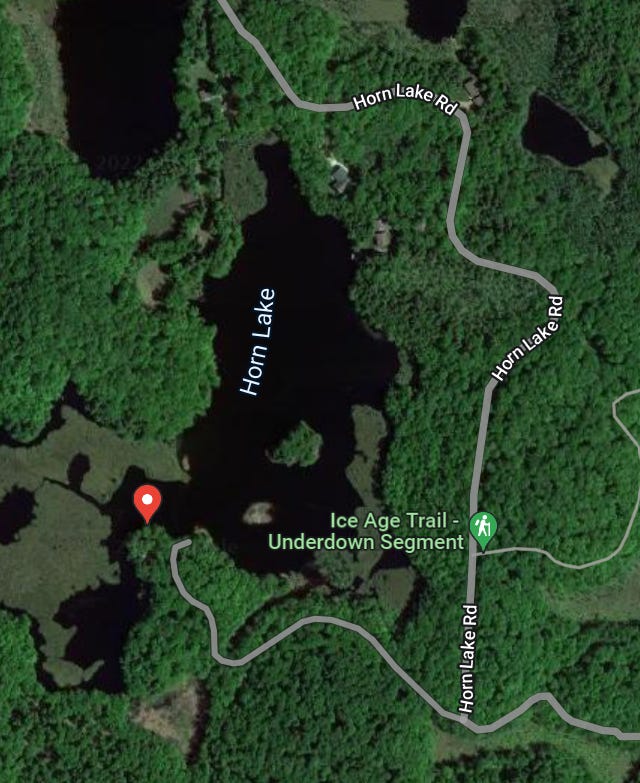
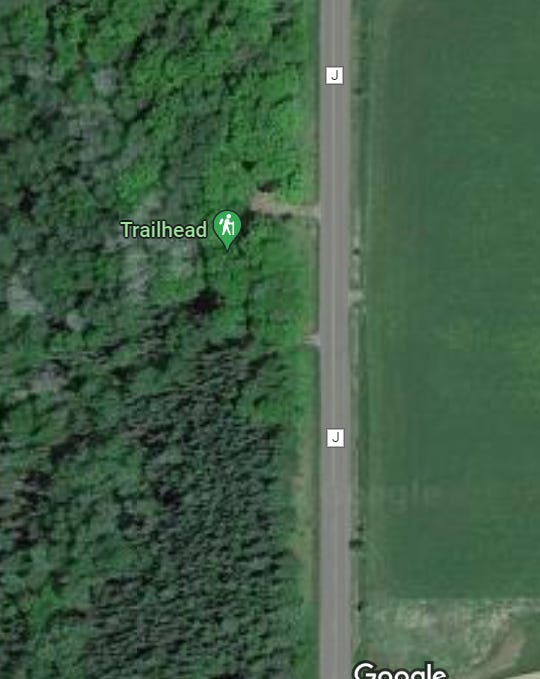
We hiked a very short portion of the Alta Junction Segment so that we had a legitimate place to park. The trail was covered in fresh snow and deep enough to warrant snowshoes. This was my first time snowshoeing with a full pack on and it was hard! I think my pack weight ended up somewhere between 26 and 28 pounds. From there, it was a connecting route from County Rd J to Axen Road, and finally - the Underdown Segment!
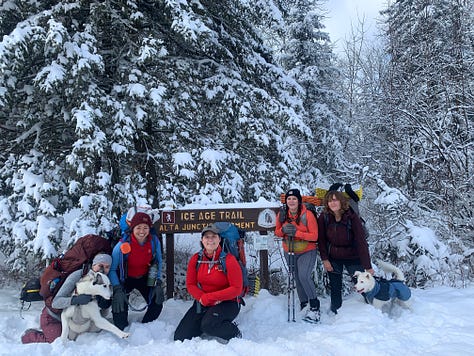
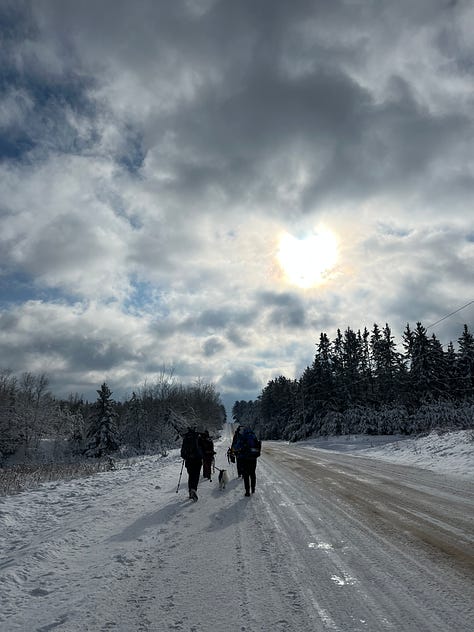
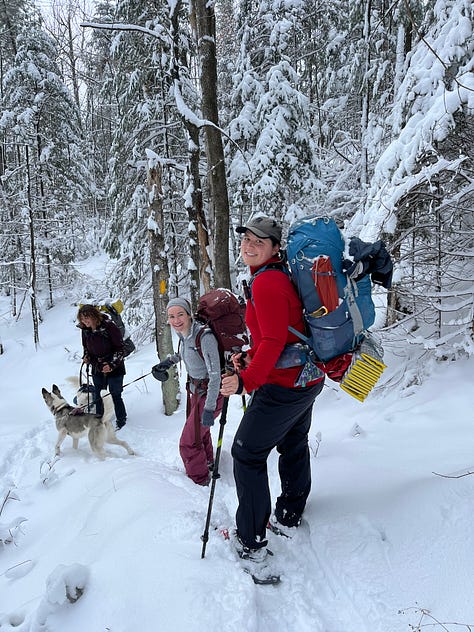
We started hiking around noon so that we could get to camp at a decent hour without too much time sitting around in the dark. We dumped a sled with a couple bundles of wood about a half mile from the trail at a road intersection. It would’ve been ideal to drop it at the actual road/trail intersection, but that road hadn’t been plowed yet. So, once we got to that intersection, we split up. Two people dropped their packs to go get the sled of wood and the other three continued on to the Dog Lake shelter. As we were hiking the last 0.5 miles to the shelter, we realized just how much of a pain in the butt it would be to pull the bundles of wood in. Oops. And once we got to the shelter, there were stacks of wood already there, so we felt a little silly about the whole situation.
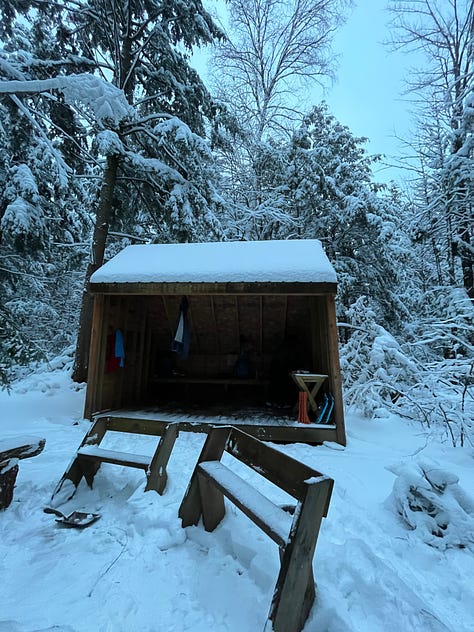
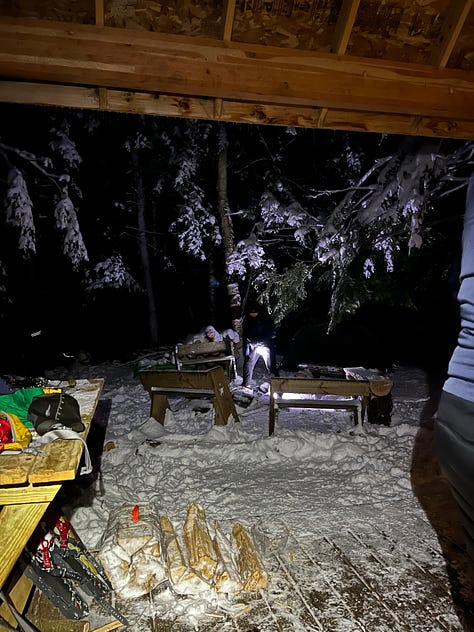

As soon as we got to the shelter, we bundled up. It’s important to make sure you don’t let the sweat from hiking chill when you get to camp. That can lead to hypothermia. I got to work at clearing out the communal area (fire pit and benches) and packing down some areas for our tents. The rest of the crew made it to the shelter just before dark. We got our tents set up, changed into dry/warm layers, started cooking supper, and got a fire going! It was a wonderful night of camaraderie, getting to know one another, making s’mores, and sharing stories. We managed to stay awake until 9:30ish and that is almost unheard of for me on a backpacking trip!
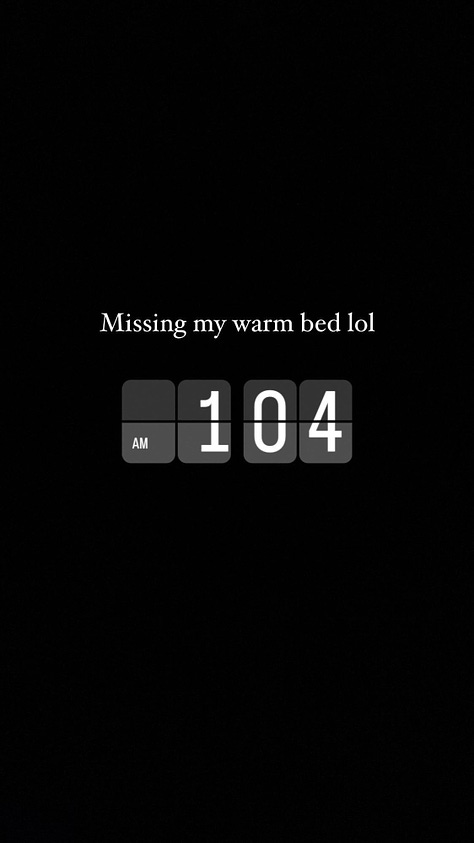
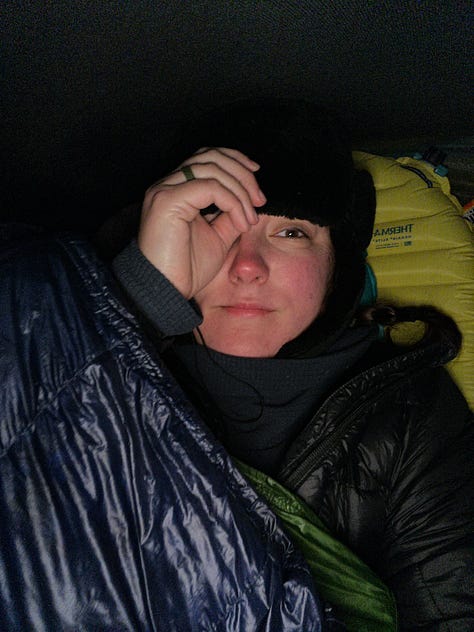
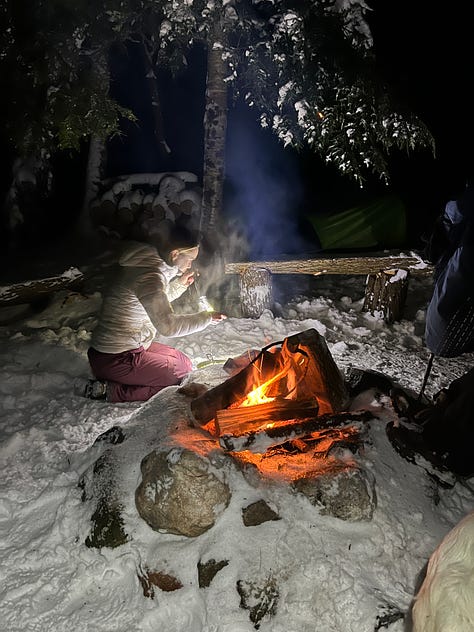
I’m going to be honest with you, I struggled to stay comfortable at night. My sleeping pad kept sliding around, I could feel cold drafts coming in where my quilt wasn’t wrapped all the way around me, and my pillow just generally sucks. Sometime around 2am I finally fell asleep and woke up around 6am. I did what I know works to start moving in the morning. I let out the air in my sleeping pad, started packing away the gear inside my tent, and changed into my hiking clothes. It was uncomfortable, but necessary, before I got out and started making breakfast. The hike out was about 3.5 miles and very hilly, but beautiful! Alright - I think I’m hitting the limit of this post, so I’m out! Stay warm, friends!
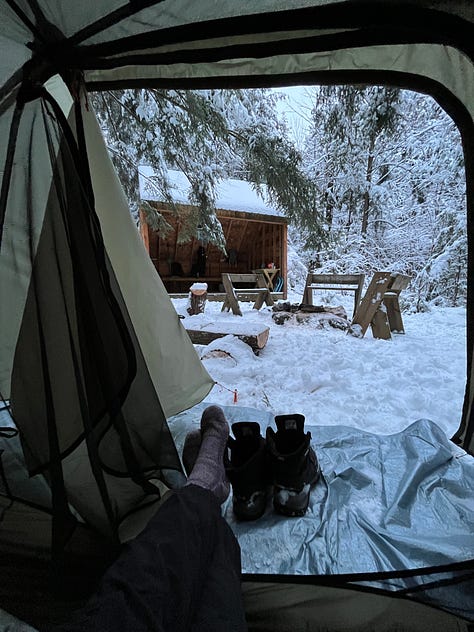

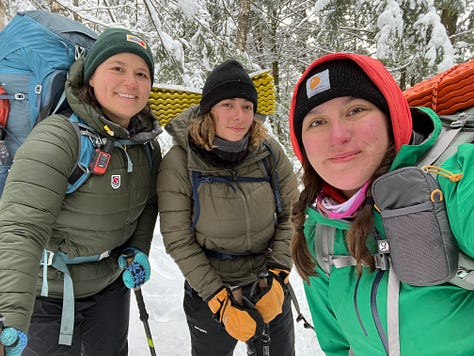




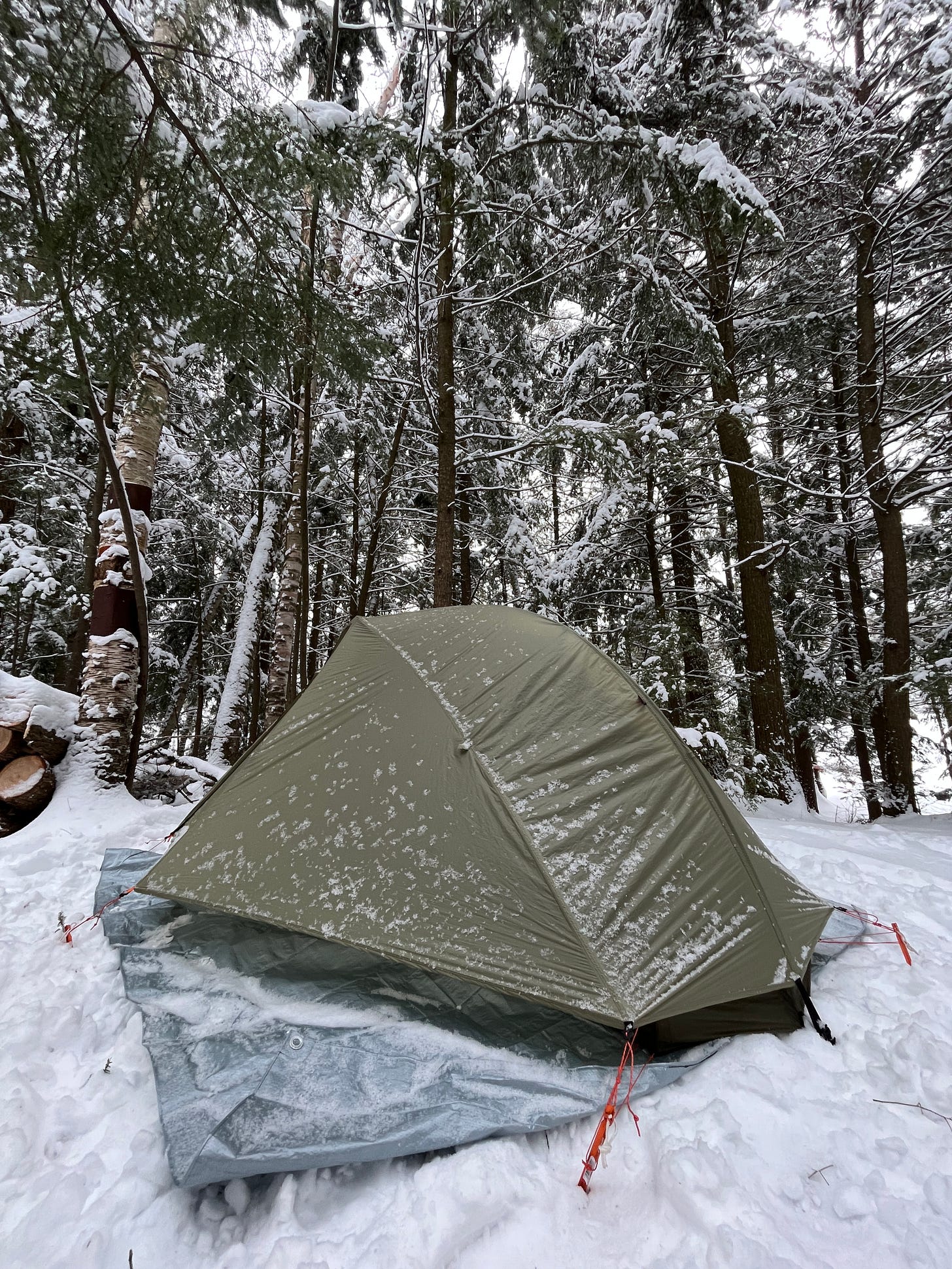
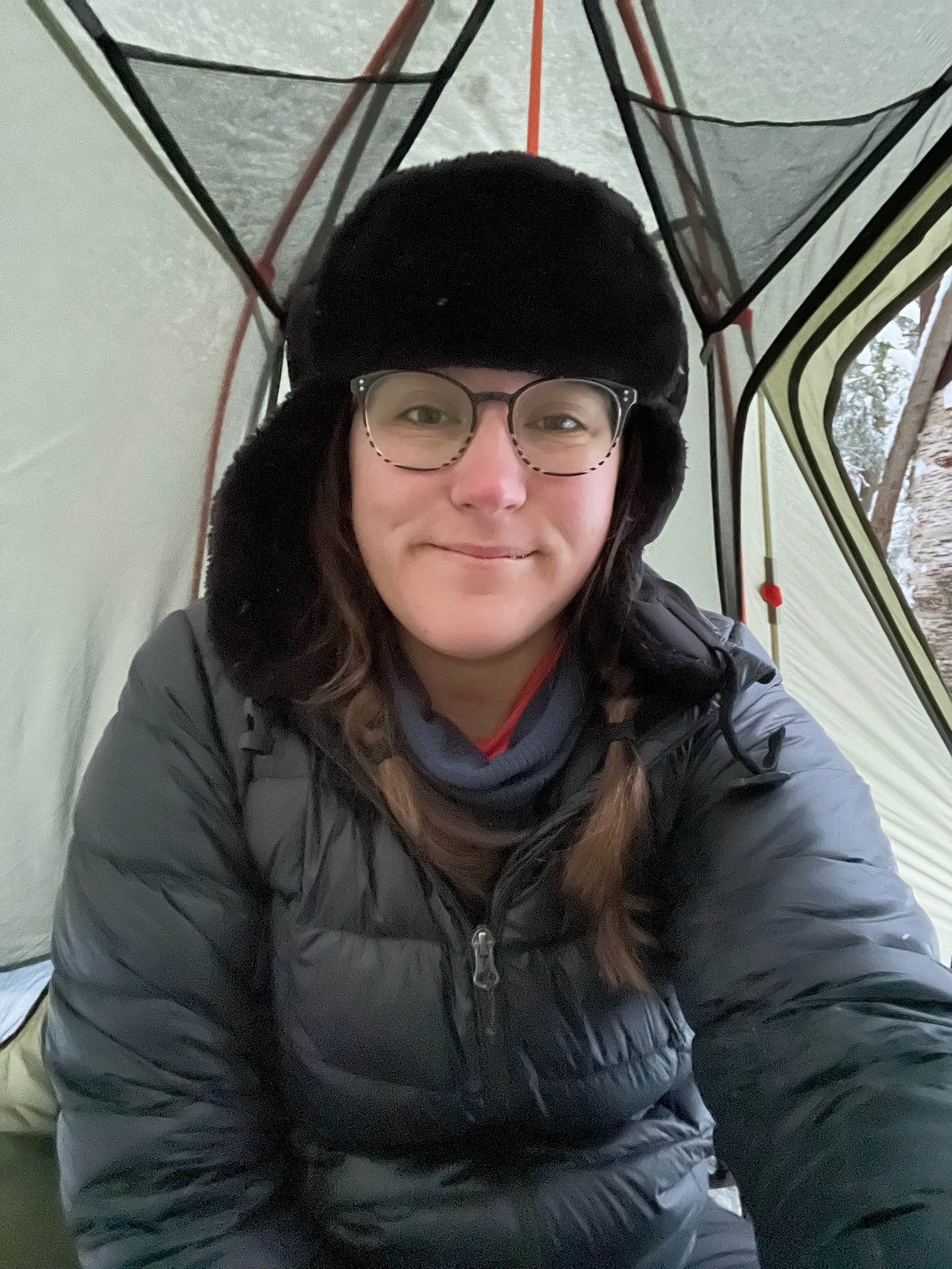
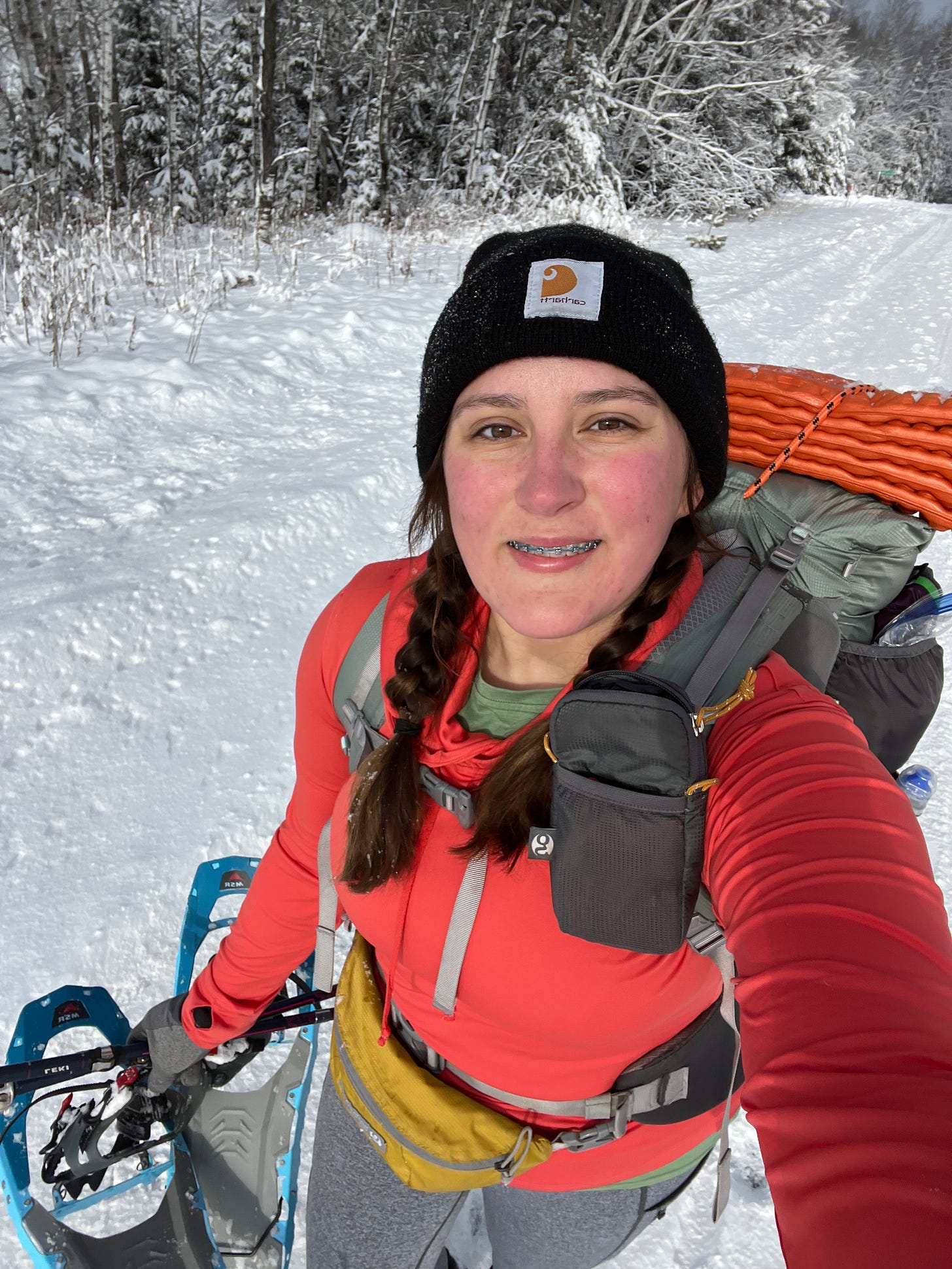
Its been a long time since ive attempted a winter trip! I think they are equal parts beautiful and challenging 💛